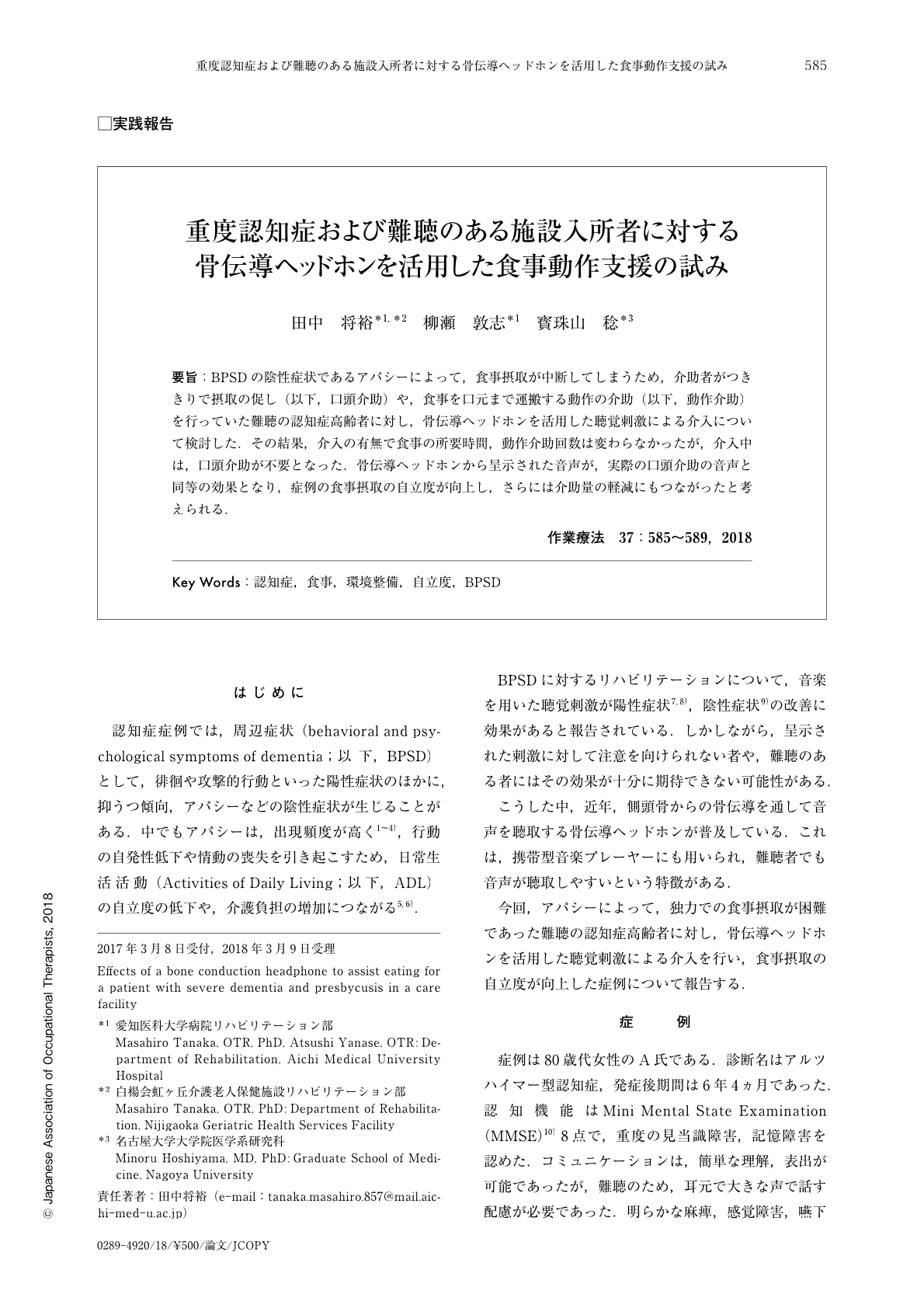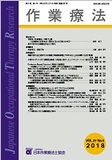Japanese
English
- 販売していません
- Abstract 文献概要
- 1ページ目 Look Inside
- 参考文献 Reference
- サイト内被引用 Cited by
要旨:BPSDの陰性症状であるアパシーによって,食事摂取が中断してしまうため,介助者がつききりで摂取の促し(以下,口頭介助)や,食事を口元まで運搬する動作の介助(以下,動作介助)を行っていた難聴の認知症高齢者に対し,骨伝導ヘッドホンを活用した聴覚刺激による介入について検討した.その結果,介入の有無で食事の所要時間,動作介助回数は変わらなかったが,介入中は,口頭介助が不要となった.骨伝導ヘッドホンから呈示された音声が,実際の口頭介助の音声と同等の効果となり,症例の食事摂取の自立度が向上し,さらには介助量の軽減にもつながったと考えられる.
We investigated the effects of verbal facilitating instructions via a bone conduction headphone on the eating behavior of an elderly client in a care facility. The case was a female in her 80's with severe dementia and presbycusis, who often stopped eating and required frequent assistance by caregivers during meals due to apathy, one of the symptoms of Behavioral and Psychological Symptoms of Dementia (BPSD). Verbal facilitation for her eating was given through a bone conduction headphone. In spite of the intervention, the required time to eat meals and the amount of assistance in eating didn't change, but the amount of assistance through encouragement was reduced and the degree of independence in eating improved. Instructions via a bone conduction headphone had the same effect as instruction by caregivers and worked as cues to start eating meals.

Copyright © 2018, Japanese Association of Occupational Therapists. All rights reserved.


